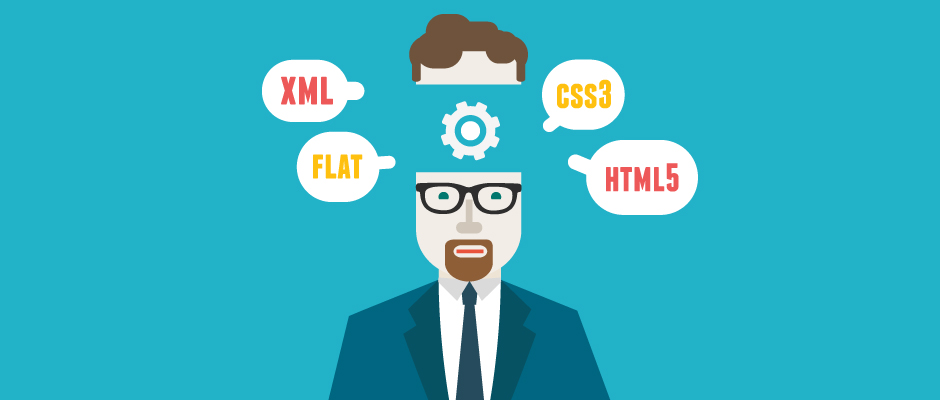To style SVG with CSS, you must first embed the SVG inline into HTML for fine control. 1. Inline SVG allows to directly select its internal elements such as

SVGs are everywhere these days—logos, icons, illustrations—and one of the big perks is that you can style them with CSS just like HTML elements. It makes them flexible and easy to integrate into modern web design. But if you've tried applying styles to SVG and ran into issues, you're not alone. There are a few gotchas to be aware of.

Inline SVG vs. External SVG
How you include your SVG in a page affects how you can style it.

- Inline SVG : This means pasting the actual
<svg></svg>code directly into your HTML. The big plus here is that you can target its elements (like<path></path>,<circle></circle>, etc.) directly with CSS. - External SVG : If you're loading the SVG via an
<img src="/static/imghw/default1.png" data-src="https://img.php.cn/upload/article/000/000/000/175211922987577.png" class="lazy" alt="Applying CSS Styles to Scalable Vector Graphics (SVG)" >tag or background image in CSS, you lose direct access to internal elements. In this case, you can only apply global styles like width, height, or filters from the outside.
So if you want fine-grained control over colors, animations, or hover effects inside the SVG, go inline.
Styling SVG Elements with CSS
Once your SVG is inline, you can treat many of its elements like regular HTML when it comes to styling.

For example, you might have a logo where you want the main shape to change color on hover:
<svg> <path class="logo-main" d="M10 10..." /> </svg>
And in your CSS:
.logo-main {
fill: #333;
}
.logo-main:hover {
fill: #09f;
}Some important points:
- Use
fillinstead ofcolororbackground-colorfor shapes and paths. -
strokecontrols outlines, andstroke-widthadjusts their thickness. - You can also animate these properties with transitions or keyframes.
Just keep in mind that some older browsers may have limited support for certain CSS features applied to SVG.
Using Classes and Scoped Styles
Like with HTML, you can use classes inside SVG to organize styles and avoid repeating yourself.
Let's say your SVG has multiple parts:
<svg> <circle class="dot primary" cx="50" cy="50" r="10" /> <circle class="dot secondary" cx="100" cy="50" r="10" /> </svg>
You can define reusable styles in your CSS:
.dot {
transition: fill 0.3s ease;
}
.primary {
fill: red;
}
.secondary {
fill: blue;
}A few tips:
- Make sure your class names don't clash with other styles on the page.
- Consider wrapping the SVG in a container and using scoped styles if needed.
- BEM or similar naming conventions can help keep things organized.
This approach keeps your code clean and maintainable, especially as SVGs get more complex.
Watch Out for Specificity and Inheritance
SVG elements can inherit styles from the page, which is handy but sometimes confusing.
For example, if you set a fill color on the <svg> element itself, child elements without their own fill will pick that up automatically. That can be useful for theming:
svg {
fill: currentColor;
} Then you can just change the color property elsewhere, and the SVG follows along.
But this also means unexpected results can pop up if you're not careful with selector specificity or conflicting rules. A good trick is to reset inherited styles when needed:
svg * {
fill: none;
stroke: none;
}That way, you start fresh and define exactly what you want.
Basically that's it. Styling SVG with CSS is powerful once you know how it works, but it does require attention to how SVG attributes map to CSS properties and how the file is included in the page.
The above is the detailed content of Applying CSS Styles to Scalable Vector Graphics (SVG). For more information, please follow other related articles on the PHP Chinese website!

Hot AI Tools

Undress AI Tool
Undress images for free

Undresser.AI Undress
AI-powered app for creating realistic nude photos

AI Clothes Remover
Online AI tool for removing clothes from photos.

Clothoff.io
AI clothes remover

Video Face Swap
Swap faces in any video effortlessly with our completely free AI face swap tool!

Hot Article

Hot Tools

Notepad++7.3.1
Easy-to-use and free code editor

SublimeText3 Chinese version
Chinese version, very easy to use

Zend Studio 13.0.1
Powerful PHP integrated development environment

Dreamweaver CS6
Visual web development tools

SublimeText3 Mac version
God-level code editing software (SublimeText3)

Hot Topics
 How can CSS be used to implement dark mode theming on a website?
Jun 19, 2025 am 12:51 AM
How can CSS be used to implement dark mode theming on a website?
Jun 19, 2025 am 12:51 AM
ToimplementdarkmodeinCSSeffectively,useCSSvariablesforthemecolors,detectsystempreferenceswithprefers-color-scheme,addamanualtogglebutton,andhandleimagesandbackgroundsthoughtfully.1.DefineCSSvariablesforlightanddarkthemestomanagecolorsefficiently.2.Us
 What are some common techniques for vertically centering content using CSS?
Jun 12, 2025 am 10:27 AM
What are some common techniques for vertically centering content using CSS?
Jun 12, 2025 am 10:27 AM
Vertical centering content can be implemented in CSS in a variety of ways, the most direct way is to use Flexbox. 1. Use Flexbox: By setting the container to display:flex and in conjunction with align-items:center, vertical centering of child elements can be easily achieved; 2. Combination of absolute positioning and transform: suitable for absolute positioning elements, by setting top and left to 50% and then using translate (-50%,-50%) to achieve centering; 3. CSSGrid: Through display:grid and place-items:center, horizontal and vertical centering can be achieved at the same time. If only vertical centering is required, use align
 Can you explain the difference between em, rem, px, and viewport units (vh, vw)?
Jun 19, 2025 am 12:51 AM
Can you explain the difference between em, rem, px, and viewport units (vh, vw)?
Jun 19, 2025 am 12:51 AM
The topic differencebetweenem, Rem, PX, andViewportunits (VH, VW) LiesintheirreFerencepoint: PXISFixedandbasedonpixelvalues, emissrelative EtothefontsizeFheelementoritsparent, Remisrelelatotherootfontsize, AndVH/VwarebaseDontheviewporttimensions.1.PXoffersprecis
 What are the key differences between inline, block, inline-block, and flex display values?
Jun 20, 2025 am 01:01 AM
What are the key differences between inline, block, inline-block, and flex display values?
Jun 20, 2025 am 01:01 AM
Choosing the correct display value in CSS is crucial because it controls the behavior of elements in the layout. 1.inline: Make elements flow like text, without occupying a single line, and cannot directly set width and height, suitable for elements in text, such as; 2.block: Make elements exclusively occupy one line and occupy all width, can set width and height and inner and outer margins, suitable for structured elements, such as; 3.inline-block: has both block characteristics and inline layout, can set size but still display in the same line, suitable for horizontal layouts that require consistent spacing; 4.flex: Modern layout mode, suitable for containers, easy to achieve alignment and distribution through justify-content, align-items and other attributes, yes
 What are the advantages of using CSS Grid for complex two-dimensional page layouts?
Jun 12, 2025 am 10:28 AM
What are the advantages of using CSS Grid for complex two-dimensional page layouts?
Jun 12, 2025 am 10:28 AM
CSSGridisapowerfultoolforcreatingcomplextwo-dimensionallayoutsbyofferingcontroloverbothrowsandcolumns.1.Itallowsexplicitdefinitionofrowsandcolumnswithflexiblesizingusingfeatureslikegrid-template-columns:repeat(auto-fit,minmax(200px,1fr))forresponsive
 What are CSS Houdini APIs, and how do they allow developers to extend CSS itself?
Jun 19, 2025 am 12:52 AM
What are CSS Houdini APIs, and how do they allow developers to extend CSS itself?
Jun 19, 2025 am 12:52 AM
CSSHoudini is a set of APIs that allow developers to directly manipulate and extend the browser's style processing flow through JavaScript. 1. PaintWorklet controls element drawing; 2. LayoutWorklet custom layout logic; 3. AnimationWorklet implements high-performance animation; 4. Parser&TypedOM efficiently operates CSS properties; 5. Properties&ValuesAPI registers custom properties; 6. FontMetricsAPI obtains font information. It allows developers to expand CSS in unprecedented ways, achieve effects such as wave backgrounds, and have good performance and flexibility
 What is the significance of Vue's reactivity transform (experimental, then removed) and its goals?
Jun 20, 2025 am 01:01 AM
What is the significance of Vue's reactivity transform (experimental, then removed) and its goals?
Jun 20, 2025 am 01:01 AM
ReactivitytransforminVue3aimedtosimplifyhandlingreactivedatabyautomaticallytrackingandmanagingreactivitywithoutrequiringmanualref()or.valueusage.Itsoughttoreduceboilerplateandimprovecodereadabilitybytreatingvariableslikeletandconstasautomaticallyreac
 How can CSS gradients (linear-gradient, radial-gradient) be used to create rich backgrounds?
Jun 21, 2025 am 01:05 AM
How can CSS gradients (linear-gradient, radial-gradient) be used to create rich backgrounds?
Jun 21, 2025 am 01:05 AM
CSSgradientsenhancebackgroundswithdepthandvisualappeal.1.Startwithlineargradientsforsmoothcolortransitionsalongaline,specifyingdirectionandcolorstops.2.Useradialgradientsforcirculareffects,adjustingshapeandcenterposition.3.Layermultiplegradientstocre






